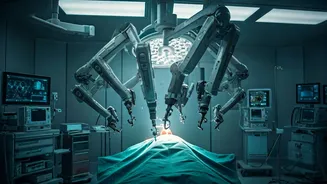Patent Reveals Details
Samsung's latest patent filings offer a glimpse into the future of foldable phone technology. The patent details a self-healing screen designed to address
a common issue: the vulnerability of flexible displays to damage. The patent outlines a design that employs a layer of materials capable of repairing minor scratches and imperfections autonomously. This self-repair mechanism would potentially extend the lifespan of foldable phones, a crucial factor given their higher price points compared to traditional smartphones. The patent indicates that the screen could utilize different methods to achieve self-healing, including the use of materials that react to light or heat, enabling the screen to mend itself over time. This could involve integrating specialized polymers or coatings that respond to stimuli to restore the screen's original condition. While the patent describes specific details of the self-healing capabilities, it is important to remember that patents do not guarantee actual product development or release; however, it does highlight the company's research and development priorities and direction.
Tech Behind Healing
The core technology underpinning the self-healing screen concept involves the utilization of advanced materials and coatings. These materials are designed to react to environmental factors such as heat or light, triggering a repair process within the screen's structure. This process is intended to mend minor damages like scratches or dents that can accumulate with regular use. The patent documentation suggests the possible integration of self-healing polymers, which are specially engineered to revert to their original state when exposed to specific conditions. Another approach might involve incorporating microcapsules containing healing agents; when damage occurs, these capsules rupture, releasing the agents to fill and repair the affected areas. The concept is not new, with research continuously being conducted in this field, aiming to improve the efficacy and efficiency of self-healing materials. For foldable screens, these advancements could be critical, given their dynamic nature and the increased mechanical stress they endure from folding and unfolding.
Durability: A Focus
Durability has become a critical focus area for foldable phone manufacturers, given the unique challenges these devices present. The self-healing screen technology aims to directly address the fragility concerns associated with foldable displays. These screens are more susceptible to damage due to the constant bending and flexing they undergo. By integrating a self-repairing mechanism, Samsung hopes to minimize the risk of screen damage, making these devices more reliable and long-lasting. This development would not only enhance the user experience but also could significantly reduce the overall cost of ownership. Replacing a damaged foldable screen is a costly process; hence, self-healing technology represents a strategic move to extend the lifespan and justify the premium price of foldable phones. Additionally, this technology may lead to a higher level of user confidence, as it alleviates the need for extra cautious handling of the device.
Impact on Users
The potential impact of self-healing screens on consumers is substantial. The technology promises a more robust and user-friendly experience. Imagine a future where minor scratches and imperfections on your phone's display simply disappear over time. This innovation may reduce the frequency of repairs and replacements, saving users both time and money. The self-healing capability may also enhance the resale value of the device, as the screen would be less prone to visible damage, preserving its original condition. This would be especially beneficial for users who frequently upgrade their phones or consider trading them in. Moreover, the peace of mind that comes with a more durable screen could significantly improve the overall user satisfaction with foldable phones. As the technology matures, we can expect to see self-healing capabilities extended to other components of the phone, further enhancing the device's resilience and longevity.
Beyond Phones
The implications of self-healing screen technology extend far beyond the realm of foldable smartphones. This innovation has the potential to transform the broader landscape of display technology. Self-healing capabilities could be adopted in various applications, from tablets and laptops to televisions and automotive displays. In automotive contexts, for instance, self-healing windshields could offer enhanced safety by reducing the risk of cracks from minor impacts. In addition, the technology could extend to other electronics, increasing the lifespan and durability of devices. It also aligns with a growing trend towards sustainability by reducing electronic waste, since devices would be more resistant to damage. This advancement may also open new possibilities for the design and functionality of electronic devices, ushering in a new era of more resilient and adaptable products.












